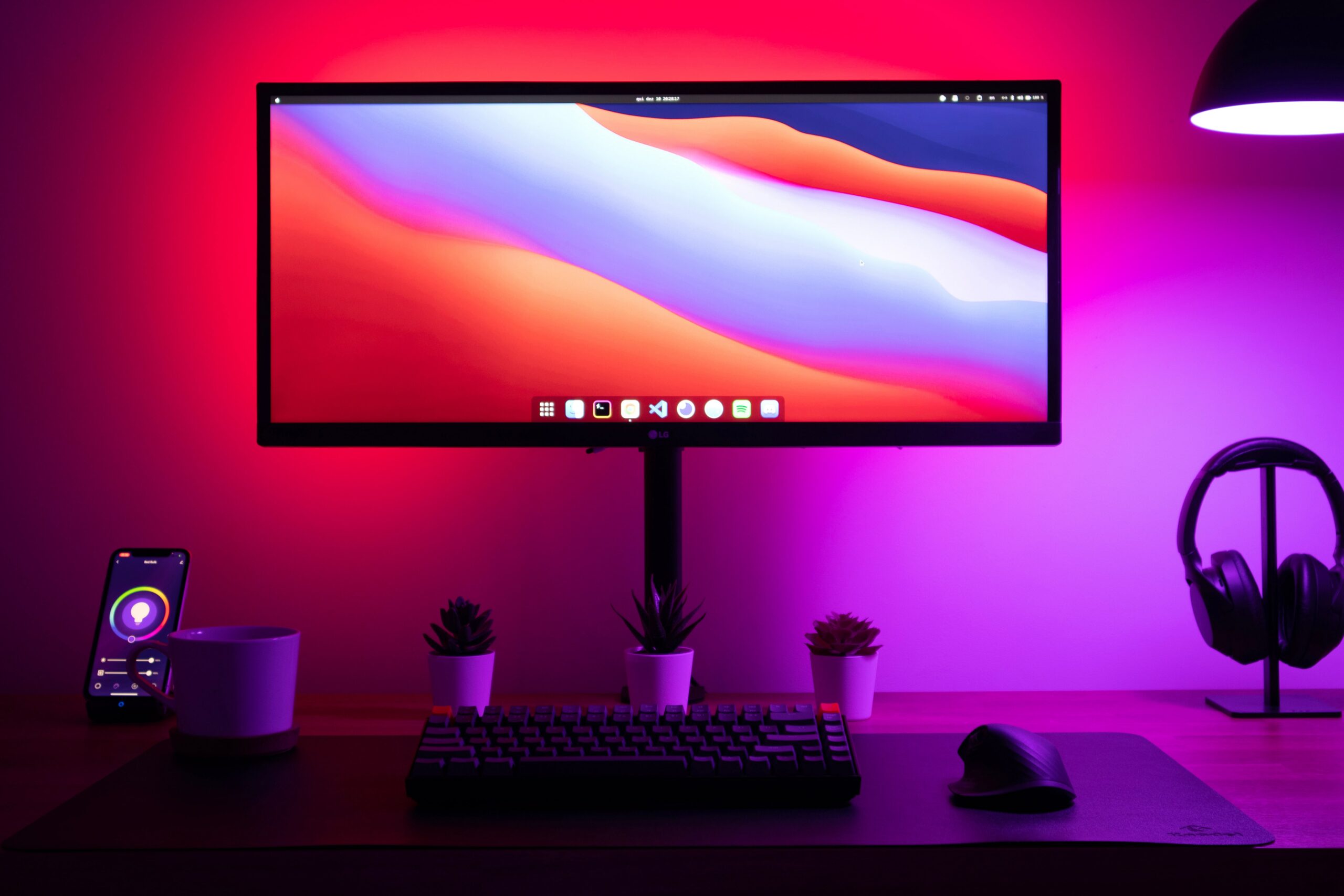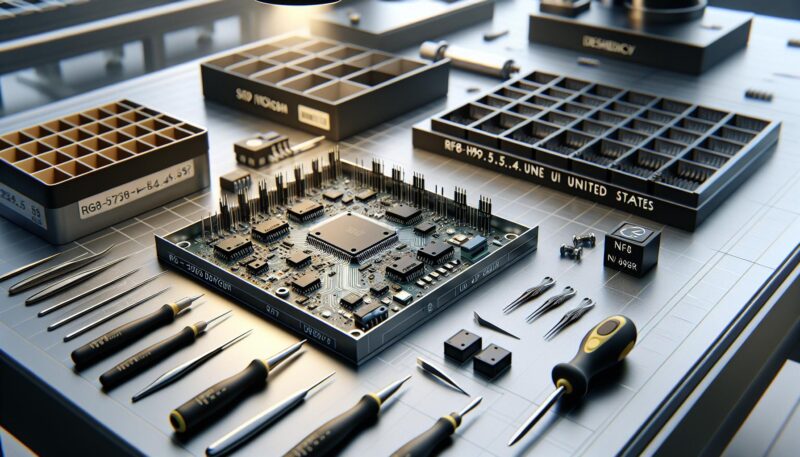
Smart lighting is the technology that allows you to control your home’s lights and appliances remotely. It can be used for convenience, security, and energy savings.
Smart lighting is a system that uses sensors to measure the amount of light in a room and then adjusts the brightness accordingly. It can also be used as a security system.
What is smart lighting and how does it work?
Smart lighting combines a number of technologies to allow indoor or outdoor lights to operate automatically in certain situations.
Smart lighting systems may be used for a variety of purposes. However, smart lights that turn on when someone enters a room or change color when anything occurs are among the most popular.
You may change the color to over 16 million distinct colors depending on the bulbs you purchase.
This will enable you to create the ideal atmosphere; for example, you may choose a warm white hue that is comparable to sunset to create a comfortable ambiance in your room.
Some smart lights may be grouped together so that all of the bulbs are installed in the same room or on the same level.
This grouping enables you to control all of your smart lights at the same time. It doesn’t matter whether you simply want to switch them on and off or if you want to set them up so that each bulb has its own color without having to change them manually.
The majority of smart bulbs, such as those from LIFX, are intended to completely replace your existing lighting system.
Other brands, like as Philips’ Hue range, provide side bulbs and pendant lights that may be used to replace your existing household fixtures.
Smart lights, such as the Nano leaf, that you can connect to your walls to create lighted art-like forms are also available.
Virtual assistants like Apple HomeKit, Alexa, and Google Assistant are also compatible with smart lighting.
As a result, you can set them up to be controlled by other smart home devices like the Amazon Echo Show.
Some smart lights aren’t compatible with all voice assistants, so double-check the spec sheet before making a purchase.
Lighting with Intelligence System Types

Smart lighting systems are classified based on their intended use and how they are managed. The following are some of these organizations:
Smart Lights with Wi-Fi
WiFi is used to operate this kind of smart lighting system. Lights in this category may be used with standard bulb holders.
After that, you must connect your lights to your Wi-Fi network so that you may control them from afar. This configuration allows you to connect a large number of lights.
Hub-Enabled Smart Lights
Smart lights that utilize the same communication technology, often known as a hub, may be used to extend the capabilities of your smart home. The disadvantage of lights in this category is that they can’t be used without a hub.
Lights that detect movement
PIR (passive infrared) sensors are used in motion detecting lighting systems to detect movement, after which they switch on or off.
These lights are useful in a sitting area since they turn on as you enter the home. You can even put them outdoors for security with a camera so that the lights come on automatically when someone approaches your house late at night.
What Kinds of Communication Technologies Can You Find in Smart Lighting Systems?

Wi-Fi
To be operated remotely, Wi-Fi-ready smart lighting systems must be linked to the internet through a router. The lights will not operate if the network is not functioning.
Bluetooth
Smart lighting solutions that are Bluetooth-enabled may create a mesh network and be managed through a smartphone. The majority of Bluetooth-enabled smart lighting solutions operate with manufacturer-developed applications. On control the lights, you must first download the app to your smartphone.
Z-Wave & ZigBee
ZigBee and Z-Wave-ready smart lighting systems, like Bluetooth-ready smart lighting systems, may create a mesh network.
However, to control these lights, you’ll need a hub, which means that if you don’t have a ZigBee or Z-Wave-ready hub, the lights won’t function.
The primary advantage of ZigBee smart lighting over Wi-Fi smart lighting is that Wi-Fi smart lights are limited to communicating with the network. On the other hand, ZigBee intelligent lights may interact with one another by relaying signals from the hub.
What Is the Best Way to Install Smart Lights?
Unboxing the bulb and putting it into a socket may be all it takes to connect smart lights in your home. The majority of smart bulbs are compatible with your existing light equipment and switches, making installation a breeze.
You may need to download the bulb’s specific smartphone app to obtain the additional degree of customization you want.
Most smart bulb makers will provide detailed instructions on how to download and setup their specialized smartphone applications.
It may be challenging to install smart lighting throughout your home or utilize a smart hub to manage the lights.
You’ll need to make sure that the smart lights you purchase are compatible with your hub. You may experiment with different custom designs for your smart lighting equipment if your hub supports the IFTTT (If This, Then That) protocol.
What is the best way to control your smart lights?
After you’ve installed an intelligent lighting system, you may control it using the following methods:
If This, Then That (IFTTT) Protocol
You may turn your intelligent lighting system into a notification system for internet alerts like incoming mail, Facebook, and Twitter if you have a smart hub that supports the IFTTT protocol.
As a result, you can set the lights to flicker whenever your smartphone or any of your social media accounts sends you a notice.
Apps for mobile devices
Most smart lighting manufacturers provide their own applications that enable you to group lights together and schedule when they turn on and off. Buy clever lights that work with voice assistants if you want additional control and functionality.
Assistant by Voice
The most common method to operate smart lights is to connect them to a voice assistant. When it comes to voice assistants, you have many choices, including Apple’s Siri, Amazon Alexa, and Google Assistant.
All of these voice assistants are powerful control points, particularly if you have a compatible smart display or speaker, like as the Echo Show or Echo Dot, in your home.
What Are the Benefits of Using Smart Lights in Your Home?
To Change the Lighting in Your Home
One of the greatest advantages of smart lights is the ability to control the amount of light they emit.
Instead of using a dimmer switch to change the brightness of conventional lights, smart lighting requires just the use of your smartphone or a voice command.
In order to save both time and money,
Motion sensors are included into certain clever lighting. As a consequence, these lights only turn on when they detect human movement within a short distance. When compared to standard bulb options, this saves both money and energy.
Using a Variety of Colors to Illuminate Your Home
Some smart lighting solutions allow for up to 16 million color combinations. You may experiment with different color combinations to create a variety of moods in your house.
You can alter the color to whatever colour you choose using the OEM app or a voice assistant, and they will light up appropriately.
To Use Your Voice To Control All Of Your Lighting
If you’ve replaced all of your conventional lighting fixtures with smart lights, you can use a voice assistant to manage them all. For example, if you’re in the downstairs living room, you can use a voice command to turn off lights on the second level.
To Keep Your House Safe
You can combine smart lights with security doorbells, cameras, and alarms since they can link to other smart home equipment.
You may set your lights to come on when motion is sensed in your backyard, for example. Even while you’re not at home, this may prevent thieves and other bad guys from breaking into your house.
to make music
Some smart lights include built-in speakers that can link to your smartphone and play music. Isn’t it amazing?
Some smart lights may even move to the rhythm of the music you’re listening to, glowing or dimming in response to the beat.
To Set Your Desired Sleep and Waking Times
Smart lights may also assist you in getting a good night’s sleep. You may, for example, set your bedroom lights to lower at a certain time to aid your sleep.
You may even set them to turn on in the morning to assist you in waking up.
Is it possible for smart lighting to improve your overall well-being?
Intelligent lighting solutions may do more than simply light up your house and save you money on your energy bill. They may also help you feel better in general.
Many studies are being conducted to determine how blue light affects sleep patterns and melatonin levels.
Pure white light, on the other hand, is thought to cause circadian rhythm disruption. This may lead to health problems related to a lack of sleep over time.
Smart lighting manufacturers are beginning to develop smart lighting systems that can change color at night to help you sleep better as a result of this study.
Smart lights with dedicated night settings provide a warm and inviting atmosphere in your home. Warm hue tones are used, which do not disturb circadian cycles, enabling you to have a good night’s sleep.
What’s the Connection Between LED Technology and Smart Lights?
It wasn’t long ago that individuals had to spend $30 to $50 to get ordinary LED lights installed in their houses.
The math was correct. The typical LED bulb contributes approximately one dollar to your annual energy cost, while incandescent lights add seven dollars.
This implies that one LED bulb would save you approximately $6 per year over incandescent lights, and since LED bulbs last between 15,000 and 25,000 hours, paying such a high price for them looked like a good long-term investment at the time.
Government subsidies and increasing efficiency requirements shook the LED industry in 2014, resulting in the introduction of a slew of new bulbs.
LED bulb costs have decreased as a result of increased competition amongst businesses, but customer demand has increased by up to tenfold. LED makers have to keep developing as a result.
As a consequence, we now have LED lights that are both cheaper and better.
Today, the smart lighting sector is leading the push toward ushering in the new LED era, and there are no signs that this trend will halt anytime soon.
Do Dimmer Switches and Smart Lights Mix Well?
Smart lights work well with smart dimmer switches, but they won’t function with traditional dimmer switches.
Because most smart lights have their own dimming processes, you don’t actually need a dimming switch.
If you utilize a dimming switch, the two dimming systems may interfere, causing the light to strobe as you dim it up and down.
The good news is that most intelligent lights’ built-in dimming mechanisms are excellent, providing smooth, precise brightness settings that don’t flicker like most old-fashioned dimmer switches.
Manufacturers are now creating smart dimmer switches that are intended to work with intelligent lighting.
Physical dimming controls, which must be installed on a wall at an accessible location, are also included in smart dimmer switches.
It’s an extra cost, but you can be sure it’ll come in useful at some point in the future.
How Long Does a Smart Lighting Bulb Last?
All smart lights are made using LED technology, which is why they can produce such a large number of lumens. Smart lights, like LED bulbs, have a very long life lifetime.
Smart lights, on the other hand, may last longer than ordinary LED lights since they are more efficient and can be switched off remotely, allowing them to be left on all day.
Last Thoughts
To summarize, smart lighting allows you to enhance your house in a variety of ways, as seen above.
As you can see, smart lighting may make you feel better in general. When it comes to purchasing an intelligent lighting system, you have many choices based on the other smart products you have in your house.
Smart Lighting
Smart lighting is the future of home automation. It has been around for a while, but it’s recently become more popular as technology has advanced. Reference: do smart lights slow down wifi.
Frequently Asked Questions
What is the point of smart light bulbs?
Smart light bulbs are a technology that is used to control and automate the lighting in your home. They can be controlled through voice commands, remote controls, or through apps on your phone or computer.
What is a smart light bulb and how does it work?
What is smart lighting in IoT?
Smart lighting is a form of light that can be controlled wirelessly via an app or remote control. It uses sensors to detect the presence of people and automatically adjust the brightness, color temperature, or ambiance settings.
Related Tags
- what is smart bulb
- what is a smart bulb for alexa
- smart led lights
- smart bulb uses
- do smart bulbs use electricity when off
















